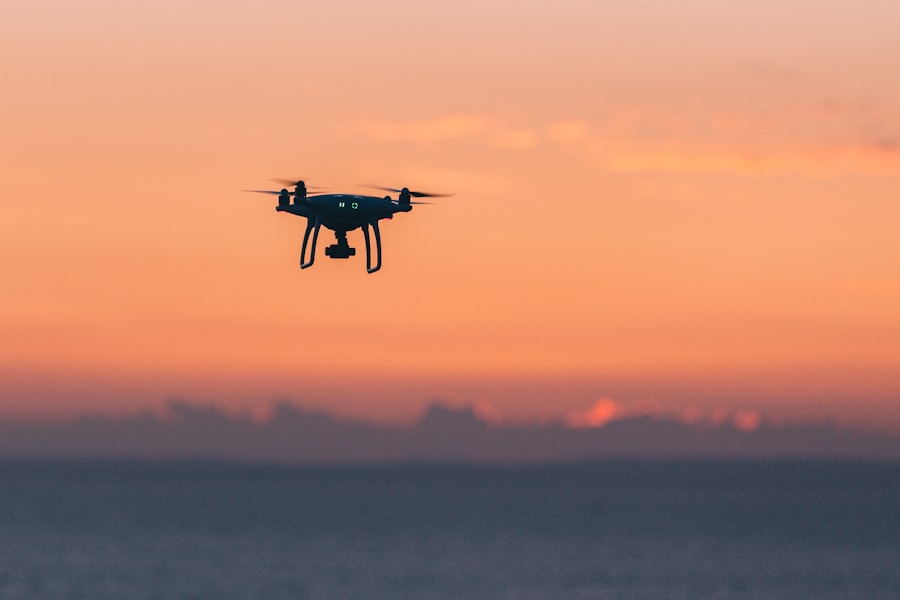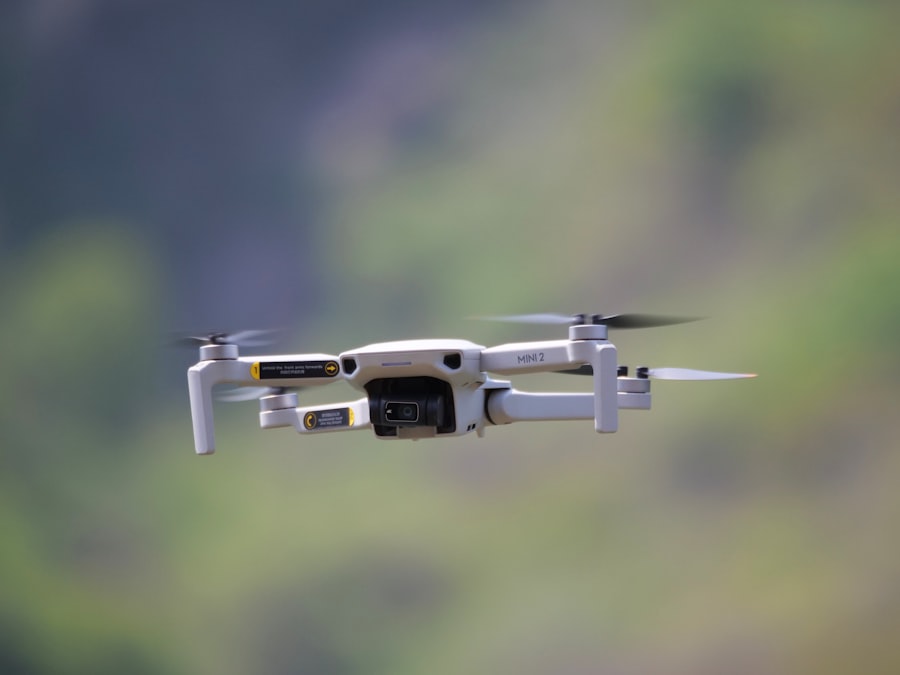Unmanned Aerial Vehicles (UAVs), commonly referred to as drones, have emerged as a transformative technology in various sectors, revolutionizing the way tasks are performed and data is collected. Initially developed for military applications, UAVs have rapidly transitioned into commercial and recreational use, showcasing their versatility and efficiency. These aircraft operate without a human pilot onboard, relying on remote control or autonomous systems to navigate and perform designated functions.
The integration of advanced technologies such as GPS, sensors, and artificial intelligence has significantly enhanced their capabilities, making them indispensable tools in modern society. The appeal of UAVs lies not only in their ability to reach inaccessible areas but also in their capacity to gather data with precision and speed. From aerial photography to agricultural monitoring, the applications of drones are vast and varied.
As industries continue to explore the potential of UAV technology, the landscape of aerial operations is undergoing a profound transformation. This article delves into the evolution of UAV technology, its applications across different sectors, the challenges it faces, and the future trends that promise to shape its trajectory.
Key Takeaways
- UAV drones have evolved significantly over the years, from being used primarily for military purposes to a wide range of commercial and recreational applications.
- UAV drones are used in various industries such as agriculture, construction, and filmmaking, providing cost-effective and efficient solutions for tasks like crop monitoring, site surveying, and aerial photography.
- Despite their numerous benefits, UAV drones face challenges and regulations related to safety, privacy, and airspace management, which need to be addressed for their widespread integration into the airspace.
- The future of UAV drones is promising, with advancements in technology such as AI, 5G connectivity, and longer battery life, leading to improved capabilities and expanded applications.
- While UAV drones offer many advantages, their environmental impact, security risks, and privacy concerns need to be carefully managed to ensure their responsible and sustainable use in the future.
The Evolution of UAV Technology
The journey of UAV technology began in the early 20th century, primarily driven by military interests. The first recorded use of a drone-like device was during World War I when the U.S. military experimented with radio-controlled aircraft for target practice.
However, it wasn’t until the late 20th century that significant advancements were made, particularly with the development of sophisticated navigation systems and miniaturized electronics. The introduction of GPS technology in the 1990s marked a pivotal moment, allowing drones to achieve unprecedented levels of accuracy and reliability in navigation. As technology progressed, so did the capabilities of UAVs.
The early models were often large and cumbersome, limited in their operational range and payload capacity. However, advancements in materials science led to the creation of lighter and more durable drones. The advent of quadcopters in the early 2000s further revolutionized the field, enabling greater maneuverability and ease of use.
These developments paved the way for a new generation of drones that could be operated by hobbyists and professionals alike, leading to an explosion in popularity and innovation within the industry.
Applications of UAV Drones in Various Industries

UAVs have found applications across a multitude of industries, each leveraging their unique capabilities to enhance efficiency and productivity. In agriculture, for instance, drones are employed for precision farming practices. Farmers utilize UAVs equipped with multispectral cameras to monitor crop health, assess soil conditions, and optimize irrigation practices.
This data-driven approach allows for targeted interventions, reducing waste and increasing yields. A notable example is the use of drones by companies like PrecisionHawk, which provides farmers with actionable insights derived from aerial imagery. In the realm of construction and infrastructure, UAVs are transforming project management and site inspections.
Drones can quickly survey large areas, capturing high-resolution images and generating 3D models that aid in planning and monitoring progress. Companies like DJI have developed specialized drones for construction that can create detailed topographical maps and track changes over time. This capability not only streamlines workflows but also enhances safety by reducing the need for workers to access hazardous areas.
The entertainment industry has also embraced UAV technology, particularly in filmmaking and photography. Drones equipped with high-definition cameras enable filmmakers to capture stunning aerial shots that were once only possible with expensive helicopter rentals. The film “Skyfall,” part of the James Bond franchise, famously utilized drones for some of its breathtaking aerial sequences.
This democratization of aerial cinematography has opened new creative avenues for filmmakers and content creators alike.
Challenges and Regulations for UAV Drones
| Challenges and Regulations for UAV Drones | Description |
|---|---|
| Airspace Restrictions | Regulations on where drones can fly, such as near airports or over certain areas. |
| Privacy Concerns | Rules regarding capturing images or videos of individuals without consent. |
| Flight Altitude Limits | Restrictions on how high drones can fly to avoid interfering with manned aircraft. |
| Registration Requirements | Mandatory registration of drones with aviation authorities for tracking and safety purposes. |
| Remote Identification | Rules for displaying identification information on drones for easy tracking and accountability. |
Despite their numerous advantages, the proliferation of UAVs has not come without challenges. One significant hurdle is regulatory compliance. Governments around the world are grappling with how to effectively regulate drone operations to ensure safety while fostering innovation.
In the United States, the Federal Aviation Administration (FAA) has established guidelines that govern commercial drone use, including requirements for pilot certification and restrictions on flight altitudes and airspace. These regulations aim to mitigate risks associated with drone operations, such as mid-air collisions and privacy violations. Another challenge lies in technological limitations.
While drones have advanced significantly, issues such as battery life and payload capacity remain constraints for many applications. Most consumer drones have a limited flight time, typically ranging from 20 to 30 minutes before requiring a recharge or battery swap. This limitation can hinder their effectiveness in large-scale operations or extended missions.
Additionally, concerns about data security and cybersecurity vulnerabilities pose risks as drones increasingly rely on connectivity for operation and data transmission.
Future Trends and Innovations in UAV Drones
The future of UAV technology is poised for remarkable advancements driven by ongoing research and development efforts. One prominent trend is the integration of artificial intelligence (AI) into drone systems. AI algorithms can enhance autonomous navigation capabilities, enabling drones to make real-time decisions based on environmental conditions and mission parameters.
For instance, AI-powered drones can autonomously identify obstacles during flight or optimize flight paths based on changing weather conditions. Another exciting development is the potential for drone delivery services. Companies like Amazon and Google have been exploring the feasibility of using drones for last-mile delivery, aiming to reduce delivery times and costs significantly.
As urban air mobility becomes a reality, we may witness a future where drones are commonplace in our skies, delivering packages directly to consumers’ doorsteps within minutes of placing an order. Moreover, advancements in battery technology are expected to extend flight times significantly. Research into alternative energy sources such as solar power or hydrogen fuel cells could lead to drones capable of longer missions without frequent recharging.
This would open up new possibilities for applications in remote areas or during disaster response scenarios where traditional logistics may be challenging.
Environmental Impact of UAV Drones

The environmental impact of UAVs is a multifaceted issue that warrants careful consideration as their use expands across various sectors. On one hand, drones can contribute positively to environmental monitoring and conservation efforts. For example, researchers utilize UAVs equipped with thermal imaging cameras to track wildlife populations or monitor deforestation rates in real-time.
This capability allows for more effective conservation strategies by providing critical data that informs decision-making processes. Conversely, the increased use of drones raises concerns about noise pollution and energy consumption. While drones are generally quieter than traditional aircraft, their proliferation in urban areas could lead to cumulative noise impacts that affect residents’ quality of life.
Additionally, as drone operations increase, so does the demand for energy resources required to power these devices. The environmental footprint associated with manufacturing batteries and electronic components also poses sustainability challenges that need addressing.
Security and Privacy Concerns with UAV Drones
As UAV technology becomes more accessible, security and privacy concerns have emerged as significant issues that must be addressed by regulators and industry stakeholders alike. The potential for misuse of drones raises alarms regarding surveillance capabilities that could infringe upon individuals’ privacy rights. Drones equipped with high-resolution cameras can capture images or video footage without consent, leading to ethical dilemmas surrounding surveillance practices.
Moreover, security threats associated with drone operations cannot be overlooked. The possibility of drones being hacked or used maliciously poses risks not only to individuals but also to critical infrastructure. Instances of unauthorized drone flights near airports or over sensitive facilities have raised alarms about potential terrorist activities or accidents that could result from such breaches.
As a result, there is an urgent need for robust cybersecurity measures to safeguard against these threats while ensuring responsible drone usage.
The Future of UAV Drones
The trajectory of UAV technology suggests a future filled with possibilities that extend far beyond current applications. As innovations continue to emerge, we can expect drones to play an increasingly integral role in various aspects of daily life—from enhancing agricultural practices to revolutionizing logistics and transportation systems. However, this evolution must be accompanied by thoughtful consideration of regulatory frameworks that balance innovation with safety and privacy concerns.
As society navigates the complexities associated with UAV technology, collaboration among stakeholders—including government agencies, industry leaders, and communities—will be essential in shaping a future where drones can be harnessed responsibly for the benefit of all. The ongoing dialogue surrounding regulations, ethical considerations, and technological advancements will ultimately determine how this powerful tool is integrated into our lives while addressing the challenges it presents along the way.


